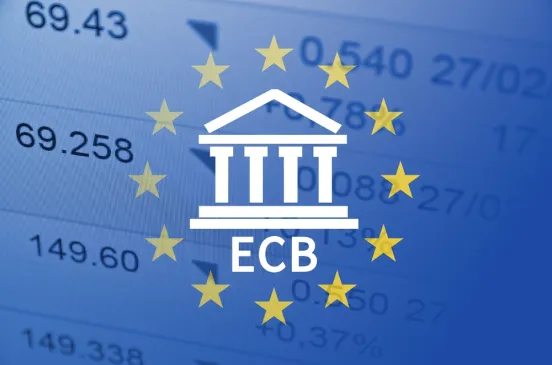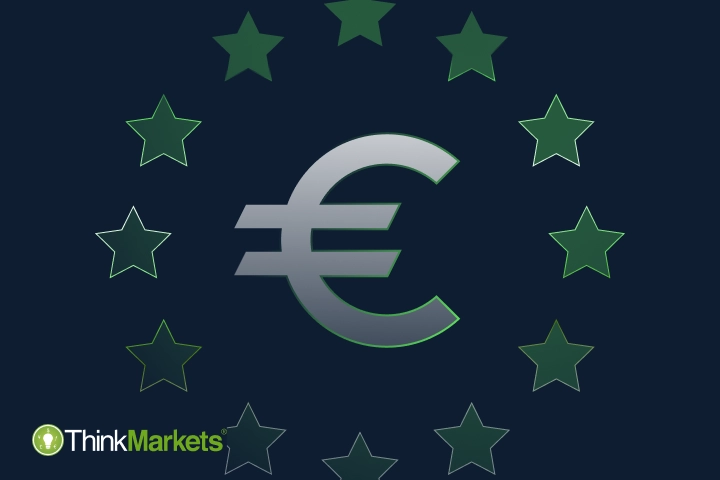
What does the ECB stand for?
ECB stands for the European Central Bank and is responsible for conducting and managing the monetary policy of the European Union, the world’s second largest economy after the United States of America. This union is called the eurozone, and currently consists of 19 countries who have adopted the euro as their form of currency. The role of the ECB is to manage the price stability of the euro currency, much like the Federal Reserve (Fed) in the US and the Bank of England (BOE) in the UK.
Who runs the ECB?
After the European Union was formed in 1993, countries within Europe (EU) joined together and adopted one single currency – the euro. Following this, countries within the European Union decided to have one single economic and monetary union that had authority to create and manage a single monetary policy across European countries. In 1999, 11 EU member states’ national banks pooled together and transferred responsibility for their monetary policy to one governing body – resulting in the European Central Bank being born.

The ECB is comprised of a governing council/decision making bodies that includes 6 executive board members, plus local central bank governors. Unlike its counterparts in the US and UK, the ECB needs to work with the national banks of the countries it governs as it’s responsible for such a wide scope of different countries. Therefore, it also offers voting rights with 15 national central bank governors, which are rotated on a monthly basis. The largest countries in the Eurozone – Germany, Italy, France, Spain and the Netherlands – have a slightly higher voting frequency than other countries, due to the size of their economies.
What does it do?
The primary objective of the ECB is to formulate and manage the monetary policy for the European Union, which means ensuring price stability and safeguarding the euro. The ECB is also responsible for maintaining the soundness and safety of the banking system and the solidity of the financial system within the European Union.
A primary directive the ECB decides on are the key interest rates for the euro area, which are:
The main refinancing operations (MRO) rate – the interest rate the banks pay when they borrow money from the ECB, it provides the bulk of liquidity to the banking system.
Deposit facility rate – the rate the banks use when depositing money overnight with a central bank.
Margin lending facility rate – the rate it costs banks to obtain overnight funds from national central banks.
By managing the interest rate, the ECB attempts to control inflation and the strength of the euro and the European economy.
Like any other monetary governing body, its key role is to ensure a stable monetary policy, however, how this is done is different to organisations such as the Fed. If the US economy is struggling, the Federal Reserve will influence the price and supply of the dollar by buying and selling government bonds. However, a unique factor of the ECB in comparison with the Fed, is that it is the only institution that can authorise the printing of euro banknotes within the EU. This means it can directly control the amount of euros available to eligible banks; whether that is through printing money or electronically through cash reserves to control inflation and interest rates.
For example, if the EU starts to experience inflation and prices go up, the ECB can pull euros from the market to soften the pressure. Likewise, if the economy starts experiencing an economic downturn or a declining output, the ECB can step in to provide more money for the economy to revert the effects and avoid a recession.
Verified banks can then bid for, or request funding at a set interest rate, which they can then loan to the public or businesses to keep the economy moving.
When does the ECB meet?
The governing council meets every two weeks. However, official monetary policy meetings are held every 6 weeks to make monetary decisions and the results are very transparent to the public. The ECB holds a press conference after every policy meeting where members of the governing body speak on behalf of the ECB to discuss any changes or actions taken, and the meeting minutes are also made public.
ECB policy meeting calendar

How does this affect trading?
The publication of the ECB rate decision is one of the most keenly watched financial events. The outcome affects the markets as it decides the interest rates within the banking system, and effectively how much of the euro money supply is available within the economy. This, in turn, has a ripple effect on the markets. The decision can have a big impact particularly on the forex and stocks markets.
The ECB rate decision can cause elevated volatility. For example, in the forex market, currency pairs tied to the euro such as EUR/USD can sometimes move by 100 pips. European stocks and indices such as the German index DAX can also see a lot of movement after the announcement.
This is because the change in interest rates has a direct impact on the accessibility of available capital, which then creates movement in the value of the currency and the euro's purchasing power. With stocks, as the interest rate has a direct impact on business lending and economic growth; it will also see movement, particularly in stocks and indices of banking providers.
Traders will also speculate on why interest rates rise or fall and try and strategise on what will come in the future. For example, if interest rates rise, this could indicate that the ECB is trying to curb inflation. If inflation is at a high level, this will also affect the markets. Growth tends to slow, there is less consumer spending and the markets – especially the stock market – can become quite volatile.
The ECB meetings are a key data point to look at when creating a trading strategy, especially if you are trading in European stocks, indices, commodities, or forex.
Having a strategy is key, and testing this in a simulated market environment could help you to hone your skills.
Trade the ECB report today!




